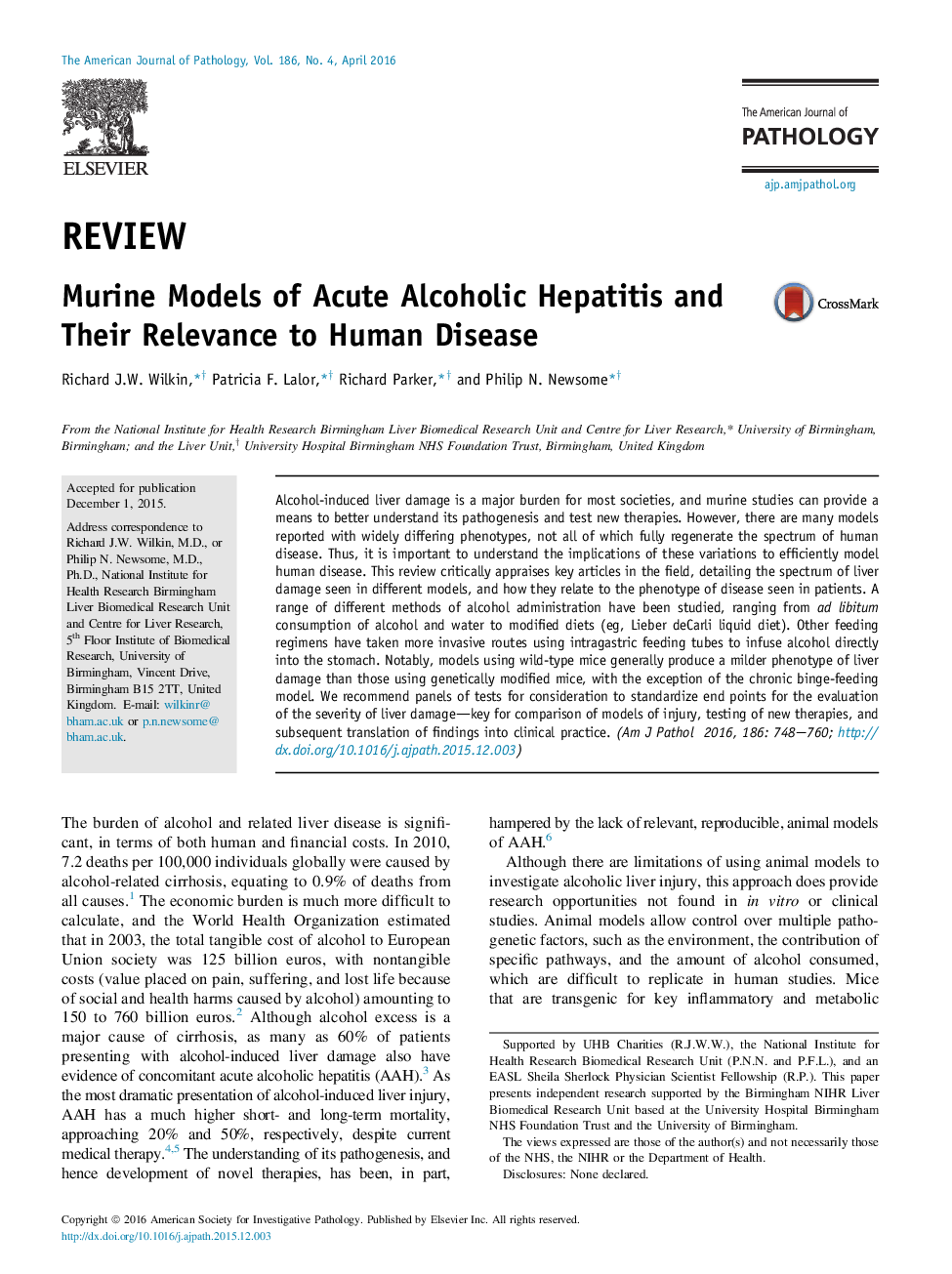| Article ID | Journal | Published Year | Pages | File Type |
|---|---|---|---|---|
| 2865729 | The American Journal of Pathology | 2016 | 13 Pages |
Alcohol-induced liver damage is a major burden for most societies, and murine studies can provide a means to better understand its pathogenesis and test new therapies. However, there are many models reported with widely differing phenotypes, not all of which fully regenerate the spectrum of human disease. Thus, it is important to understand the implications of these variations to efficiently model human disease. This review critically appraises key articles in the field, detailing the spectrum of liver damage seen in different models, and how they relate to the phenotype of disease seen in patients. A range of different methods of alcohol administration have been studied, ranging from ad libitum consumption of alcohol and water to modified diets (eg, Lieber deCarli liquid diet). Other feeding regimens have taken more invasive routes using intragastric feeding tubes to infuse alcohol directly into the stomach. Notably, models using wild-type mice generally produce a milder phenotype of liver damage than those using genetically modified mice, with the exception of the chronic binge-feeding model. We recommend panels of tests for consideration to standardize end points for the evaluation of the severity of liver damage—key for comparison of models of injury, testing of new therapies, and subsequent translation of findings into clinical practice.
